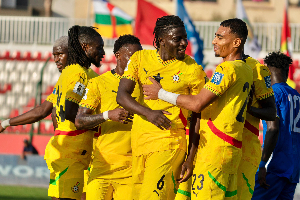I had bought an Airtel mobile modem on 20th April and needed to get the sim card registered so I can start using it. My new found friend Frank Goodhead (so British a name, yet so Nigerian a fella!) told me he was standing by for us to do it later in the day. I had a series of meetings and engagements, and a tight deadline to get an activity done today. The person I was working with took a break to have his brunch, so I sent a mail to Frank that I got 30minutes and can we go to the Airtel office at Illupeju? He said yes and was in my office within minutes.
I think he guessed, wrongly, that my car was available and that the driver was waiting outside. He had told me that the Airtel office was ‘just here’, so I guessed it was within a walking distance. With our guesses in our head, we both went out through the security checkpoint and Frank engaged the PZ driver in the first car he saw outside. I don’t know what the guy told Frank but it was clear that wasn’t my car. My official car is not yet available.
Frank instinctively flagged down two okadas, motorbike taxis in Lagos . One for me, one for him. He was on his within seconds! Of course, I had to follow his lead. Eish. In previous visits to Nigeria , I had sworn I would never get on an okada.
For safety reasons mostly. Dr Olabisi Onoviran Osagie is a longtime friend of mine and a surgeon. She tells me every that in Nigeria , every tertiary hospital has an 'okada ward' where victims of commercial motorcycle accidents are admitted. ‘My brother,’ she emphasises with passion, ‘the ward are always full.’
The story is told of a former Unilever CEO in Nigeria . The company had instituted as part of its safety rules that no employee is to take okada, especially on company duties. The CEO was due to travel outside the country and was on his way to the airport in his 4x4, jeep as my Ekosians would call it. The traffic to the airport was massive, they could see the airport from afar but it was clear they would never reach it in time for the check-in. He was at risk of missing the flight. The travels/protocol officer accompanying the team had a breakthrough thought on the way forward. He got two okadas, sat on one with the CEO’s luggage and asked Oga to get on the other one! That is how the CEO made it to the airport in time! As we say and modified for Eko, when it gets to crunch time, a British CEO would speak Yoruba! In Ghana , we would say obia nye obia!
But I knew I would definitely have to experience it one day, as I was now working in Nigeria . The way these okada ‘drivers’ weave through the traffic, sometimes riding in opposite directions to traffic etc, they weren’t my best of friends, I must admit. I am in a dilemma here. Technically, the ‘driver’ of a motorbike is a rider, right? But in this case of a motorbike taxi, is the passenger the rider and the rider the driver? I really don’t know. Guess that is part of my ongoing homework in this beautiful, vibrant city of Eko .
I got onto the back of the okada and we set off.
“There is something wrong,” the driver said after just about 10 metres. “I think I have a flat tyre, I can’t go on anymore.”
At this point, I couldn’t see Frank, they had gone on ahead of us. Maybe I should call him, as there was no way I was going to flag another okada!
The driver got off and checked his back tyre. It was OK – no puncture.
“Oga, ibi like ibi you. This be your first time on bike?” I didn’t answer him!
“You dey shake, you for be steady.”
I got on again, as I sight Frank and his driver come back to check on us.
We made it to the Airtel office, in a more stable fashion.
The whole act of sitting behind an okada is an art, which must be mastered. First of all, I don’t think I am allowed to hold the midrib of the driver. That means I should have something to hold onto if I want to balance well. Just like carrying and balancing a pot of water on your head without holding it. And for the passenger not to fall as the okada meanders through traffic, one needs to have the flexibility of a rope walker, and even that of a mobile ballet dancer – swinging in sync with the turns. More like how the Sekondi seaman of yore walked when he got off his ship. The walk of an asaase seaman!
A couple of years ago, the authorities in Lagos state promulgated a law that made it mandatory for both drivers and passengers of and on okadas to wear crash helmets. The ingenuity of the Lagosian came to the fore. The law was adhered to, to the letter. The spirit of the law didn’t matter. The ‘helmets’ ranged from used paint buckets to chamber pots. In a January 2009 article on the online newsportal Nigerian Village Square by Reuben Abati titled Okada Helmets and Road Safety, the writer mentions that some riders used factory helmets and jockey caps; some even used calabash helmets!
In 2009, whilst working for Nosak, I spent a month in Lagos and on one day made an observation that caused me to love my folks in Eko even more. A lady was on the back of an okada and had the helmet held over her hair – suspended. Her hair were in braids and obviously the helmet couldn’t fit. But to satisfy the requirements of the law, the helmet was held in place, albeit a few inches above her head! I was told later that it was necessary to also ward off any evil spirits that may want to cause an accident for her to fall and break her head. The helmet provided even spiritual protection. Tofiakwa!
My friend Vanessa Sylver provided some more insight for me why the helmets are not usually worn. She indicated that usually the reason why it is often suspended mid air from the head is for health sake. “Often times, these okada riders use muddy water deposited on the streets as a result of heavy rainfall to wash the motorbike. Thus, to avoid getting germs and all other forms of dirt from the hair, we suspend it mid air.” Interesting.
More interesting is the expose given by Reuben Abati in his article. I quote him:
“The people benefiting most from the okada helmet rule are the sellers of handkerchiefs, toilet rolls, baseball caps and polythene bags, which people first use to cover their heads before putting on the helmet when they decide to use it. The excuse is that it is risky to allow a helmet that has touched another man's head to touch yours. In our cultures, there is a superstitious belief that the head must be protected, because it is the home among Yorubas of ori or ayanmo and among Igbos of one's chi.
The meaning of these anthropological concepts is more spiritual than physical. Many Nigerians insist that sharing the same helmet with another person could result in the transfer of bad luck.” (Source: http://www.nigeriavillagesquare.com/articles/reuben-abati/okada-helmets-and-road-safety-13.html)
But the wahala of using helmets for the ladies of Eko is more pronounced on weekends – Saturdays and Sundays. Imagine one fine lady going for a traditional wedding or to church, dressed in her beautiful lace complete with her gele (headtie/headgear). How in the name of eba is she going to fit a helmet on her head? On the gele?
After our business at Airtel, we came out of the office and Frank made it close to two waiting bikes.
“It is not too far to the office, Frank,” I told him. “Let’s walk.”
Once a day on okada is enough practice for my first Eko Okada Experience.
~~~~~~~~~~~~~~~~~~~~~~~~ Sources: Nana Awere Damoah
Author, Tales from Different Tails/Through the Gates of Thought / Excursions In My Mind
Opinions of Saturday, 28 April 2012
Columnist: Damoah, Nana Awere














